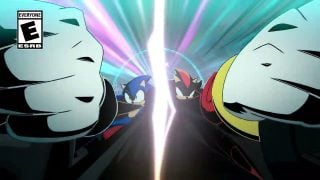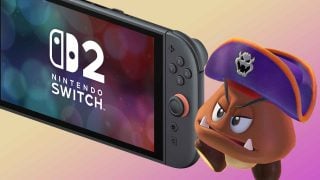One year ago today, Splatoon was released, to critical acclaim, on the Wii U. With one year of Splatoon experience under my belt, I’m just going to come right out and say it: Splatoon is the best game that Nintendo released on the Wii U. In an industry where shooters are becoming more and more complex, Nintendo was bold enough to introduce a simple shooter that’s fun for just about everyone. While plenty of us were intrigued at the thought of a fresh, new Nintendo IP when Nintendo first announced Splatoon at E3 2014, we were also surprised that Nintendo was making a move into the shooter genre. Although many will argue that Splatoon isn’t a true shooter, I’m inclined to believe that these lovable kid/squid hybrids are an example of the shooter genre in its purest, most enjoyable form.
Making a splash
Looking back over Splatoon’s incredible first year, it’s easy to say that it outperformed everyone’s expectations. It was a brightly colored, cartoonish shooter, featuring cute characters, and it was coming from a company not well-known for its focus on competitive games. But it managed to sell over a million copies within a month of release and is now sitting at over four million copies sold as of March 2016. It also received multiple Best Shooter and Best Multiplayer awards from various outlets, such as IGN and the Game Awards. Today I want to take a look at a few reasons why this odd little shooter did so well, and touch on what it means for this fresh new franchise.
Turning the shooter genre on its head
Splatoon has almost the exact opposite rules of most shooters; your main goal isn’t to kill members of the opposing team; it’s to shoot your team’s ink literally everywhere. While most recent shooter games have players scouring the internet for the best weapon loadouts and pre-ordering games for bonus weapons and early access to maps to give them a distinct advantage over their fellow players, Splatoon was incredibly easy to pick up and play. The basics are easy to understand: cover the ground in your ink, swim through it to recharge your weapon, and avoid the other team’s ink. Each main weapon belongs to one of five weapon classes, each with their own strengths and weaknesses. Although we were introduced to Splatoon with only three weapon classes, the pivotal August update added a bit more variety by bringing in new weapon types.
Updates galore
Splatoon launched with only a small amount of content, and while I was wary at first, this was something that I ended up wholeheartedly supporting. Launching with a only five maps, one multiplayer mode, and 29 weapons, critics were quick to point out that the lack of content was a negative. But we received updates almost weekly, well into the fall, and we’re still seeing small updates every now and then. This strategy kept me, and most players, always coming back for more. It allowed us to learn the game, without being overwhelmed by a massive amount of content. We were able to come back to Splatoon each week with a few things to learn and try out that hadn’t been there before, and it kept people interested. After a year, we now have a whopping 16 stages, four multiplayer modes with a plethora of options, and 83 weapons, each with their own specific loadout. Splatoon effectively delivered more content, for free, than its competitor shooter games could ever sell.
Simple single-player
Splatoon’s main focus and selling point is the online multiplayer, and it’s probably best that this game excelled in that category instead of this one. However, that doesn’t mean that the single-player campaign should be ignored. The single-player campaign was surprisingly fun and extremely rewarding. It taught us basic game mechanics and blurred the lines between shooter and platformer, providing a real pleasure for even the most seasoned of Nintendo’s fans. The level design really stood out here; the stages and enemies were whimsical and more challenging than they appeared; looking back, that seems very fitting coming from the company responsible for Super Mario 3D World and countless other iconic platformers. Even each boss in Splatoon has a classic “Nintendo-Boss” feel; the fights are fun, while being tough if you don’t know what to expect and not too hard for players that come prepared. Remaining true to Nintendo’s lighthearted nature, each boss has an intimidating gimmick that also makes them funny and/or cute. Personally, I’m always delighted to go back and face The Ravenous Octomaw with his deceptively cute face.
The single-player campaign also provided the only way to get some of Splatoon’s best weapons. (I’m looking at you, Aerospray RG.) This provided a great incentive for me to go back and finish the single-player after getting severely distracted playing the online multiplayer. The replay value is fun as well, especially after upgrading your campaign-specific weapons. It’s always fun to go back and beat on those silly Octo-bosses. The amiibo challenges also focus on completing campaign missions with a different set of weapons or conditions, which still has me playing them to this day.
Manic multiplayer
Splatoon’s bread-and-butter is its impressive online multiplayer. It’s fast and exciting, but it feels accessible right from the start. People are able to jump in and have fun as soon as they start the game. This was integral to Splatoon’s early days, since it sold almost everyone on this new type of shooter. Each different game mode has something new to offer, which was fun to explore as each one was unlocked or released little by little throughout the game’s first few months. The quick and messy Turf Wars drew everyone in at first. The all-out, ink-everywhere playstyle was a great introduction to these lovable kid-squid hybrids, and was complemented greatly by the choice of music that would accompany each and every match.
When the game first launched, players were tasked with having a large amount of players reach level ten to unlock Ranked Battles. This task was completed within three days, and Ranked Battles were officially unlocked on June 1st. These days, ranked matches are often crazier than Turf War; with Tower Control on newer stages like Museum d’Alfonsino being something of a bloodba– er, inkbath.
One of the huge negatives for critics and fans alike in the early days of Splatoon was that there was zero way to communicate with your team, apart from two commands assigned to the D-pad. Not being a huge fan of online gaming, I didn’t really see that as a downside. In fact, I don’t really see a problem with it now, even though I’m much more of an online gamer these days. I have always thought that a huge part of the fun in Splatoon is working effectively as a team without any real means of communicating directly with one another.
amiibo support
A year later, I’m still inclined to believe that Splatoon’s amiibo support is executed perfectly. It currently supports the three Spaltoon amiibo, Inkling Girl, Inkling Boy, and Inkling Squid. Each one of the three unlocks challenge stages; these are stages from story mode with different rules and/or different weapons. After completing a set of three stages and defeating a boss, you’re awarded with special clothing articles exclusive to the amiibo challenges. Back in April, five more Splatoon amiibo were announced, one for each Squid Sister, and three somewhat lackluster recolors of the Inklings and the Squid. If these new amiibo add any additional content to an already huge game, I’ll be surprised. A man can dream though, right?
People claimed, and will probably continue to claim, that Nintendo is hiding this extra amiibo content behind a money-wall by locking them exclusively to amiibo, but these were just tiny extras in a game that ended up with so much free content. Is it a slightly cheap marketing tactic? Maybe so, but I think it’s also a cool little bonus treat, a treat that made me happy to own each of the amiibo that Splatoon supports.
What’s next?
Over the last year, Splatoon has spent more time in my Wii U than most of my other games combined. It’s a fun little shooter that I was highly skeptical of at first, but my skepticism made the payoff so much greater. I tell everyone that owns a Wii U to go buy it if they haven’t, because I truly believe it’s not a game that anyone should miss out on. Sure, it has its shortcomings, but the good outweighs the bad by a far margin. I’ve never been a fan of shooters, but Splatoon has me hooked, and now there are even shooters on other consoles that I play regularly thanks to my fantastic introduction into the genre.
This incredible first year means that Nintendo has to go somewhere with it, right? Hopefully so. This new IP made the biggest splash that Nintendo has seen in a long time, and it would be silly not to follow it up. I suspect we’ll see a sequel soon, maybe as a NX launch title, who knows? Splatoon has nowhere to go but up from here, and I’m happy to keep splatting away until the inevitable release of Spla-two-n.







